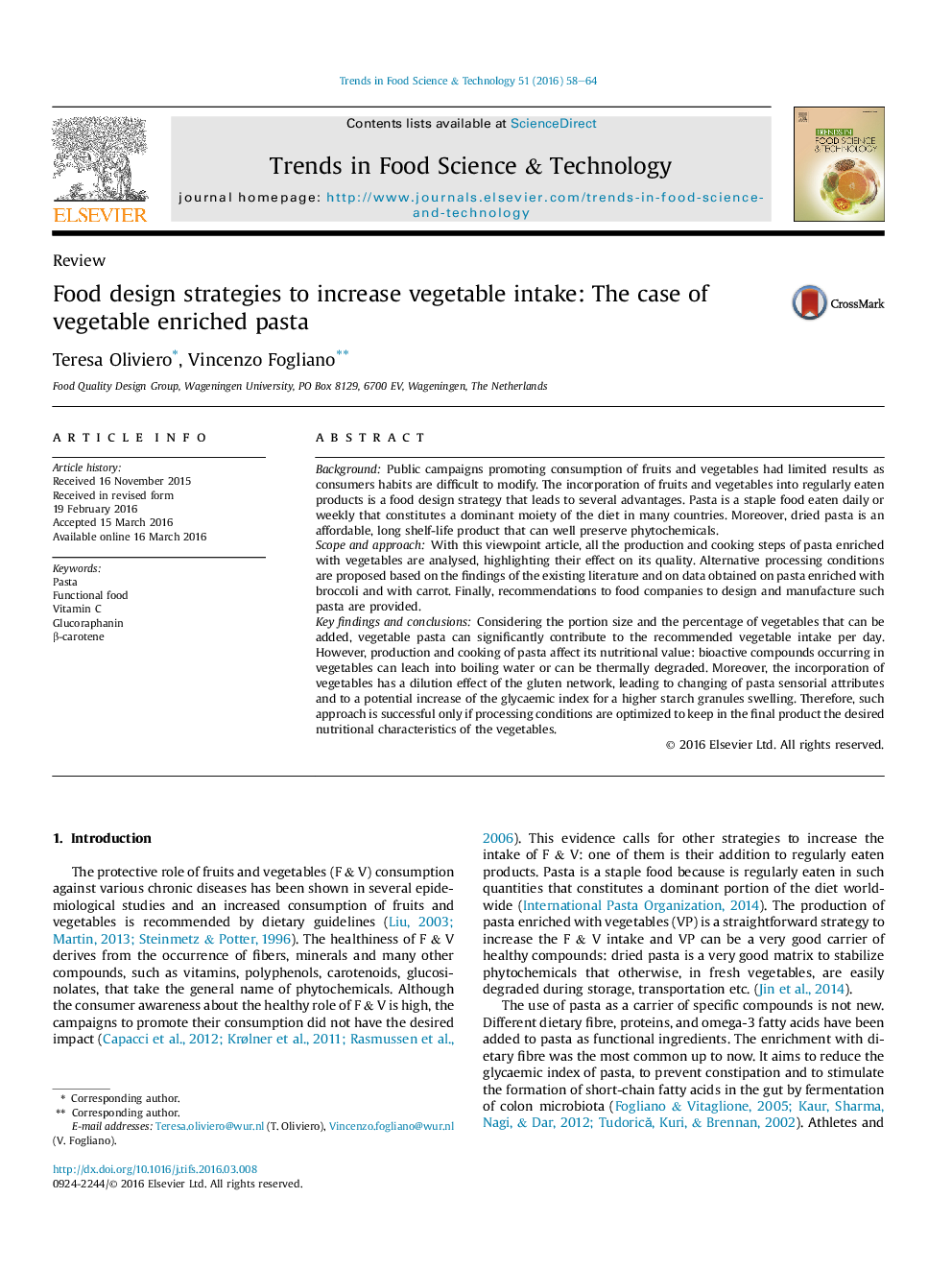| Article ID | Journal | Published Year | Pages | File Type |
|---|---|---|---|---|
| 2098524 | Trends in Food Science & Technology | 2016 | 7 Pages |
•Public campaigns promoting consumption of fruits and vegetables had limited success.•To incorporate vegetables into stable food, such as pasta, can be a good strategy.•However, healthy phytochemicals can be lost upon pasta making and cooking.•Optimization of vegetable pasta process can be effective to retain healthy compounds.
BackgroundPublic campaigns promoting consumption of fruits and vegetables had limited results as consumers habits are difficult to modify. The incorporation of fruits and vegetables into regularly eaten products is a food design strategy that leads to several advantages. Pasta is a staple food eaten daily or weekly that constitutes a dominant moiety of the diet in many countries. Moreover, dried pasta is an affordable, long shelf-life product that can well preserve phytochemicals.Scope and approachWith this viewpoint article, all the production and cooking steps of pasta enriched with vegetables are analysed, highlighting their effect on its quality. Alternative processing conditions are proposed based on the findings of the existing literature and on data obtained on pasta enriched with broccoli and with carrot. Finally, recommendations to food companies to design and manufacture such pasta are provided.Key findings and conclusionsConsidering the portion size and the percentage of vegetables that can be added, vegetable pasta can significantly contribute to the recommended vegetable intake per day. However, production and cooking of pasta affect its nutritional value: bioactive compounds occurring in vegetables can leach into boiling water or can be thermally degraded. Moreover, the incorporation of vegetables has a dilution effect of the gluten network, leading to changing of pasta sensorial attributes and to a potential increase of the glycaemic index for a higher starch granules swelling. Therefore, such approach is successful only if processing conditions are optimized to keep in the final product the desired nutritional characteristics of the vegetables.
